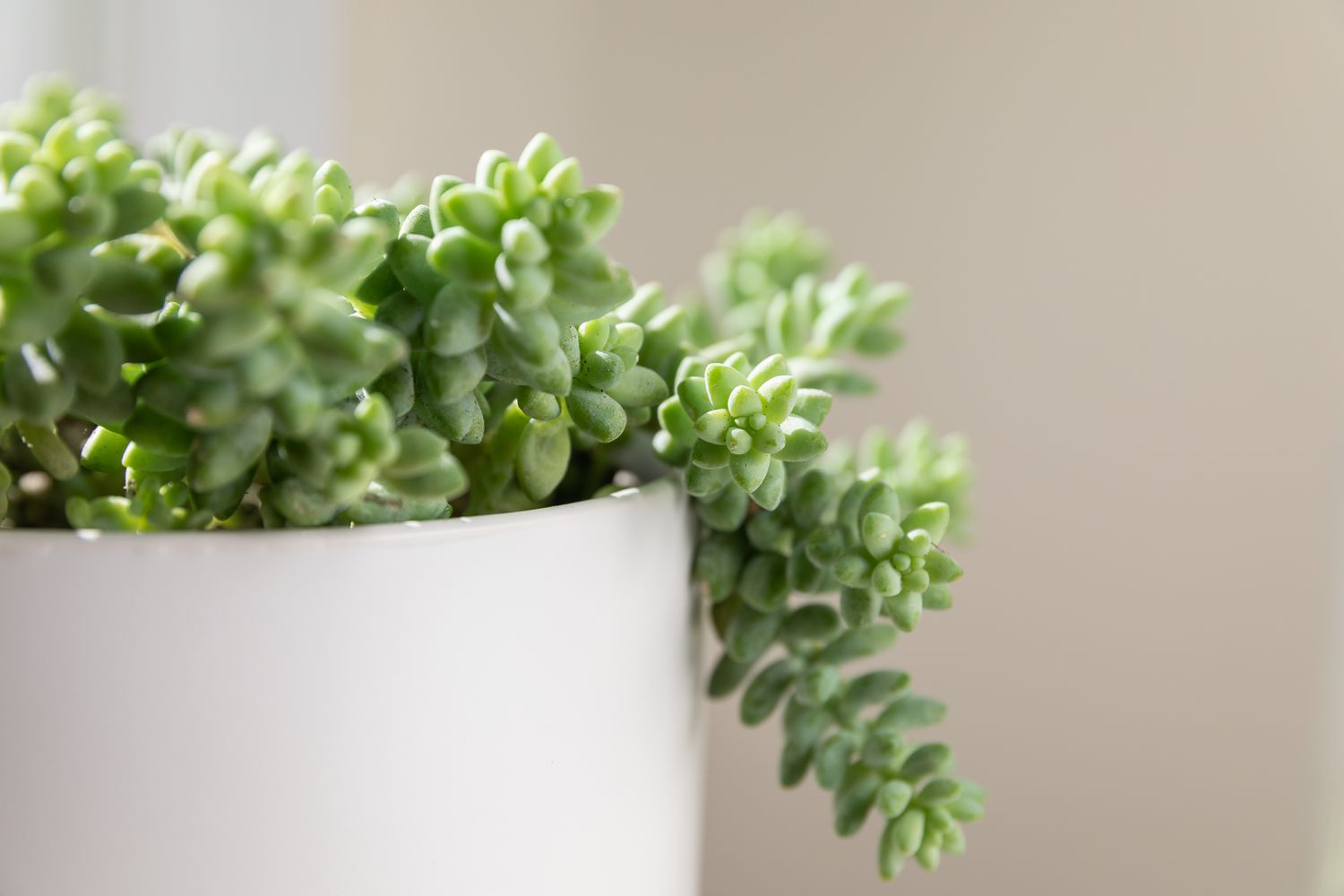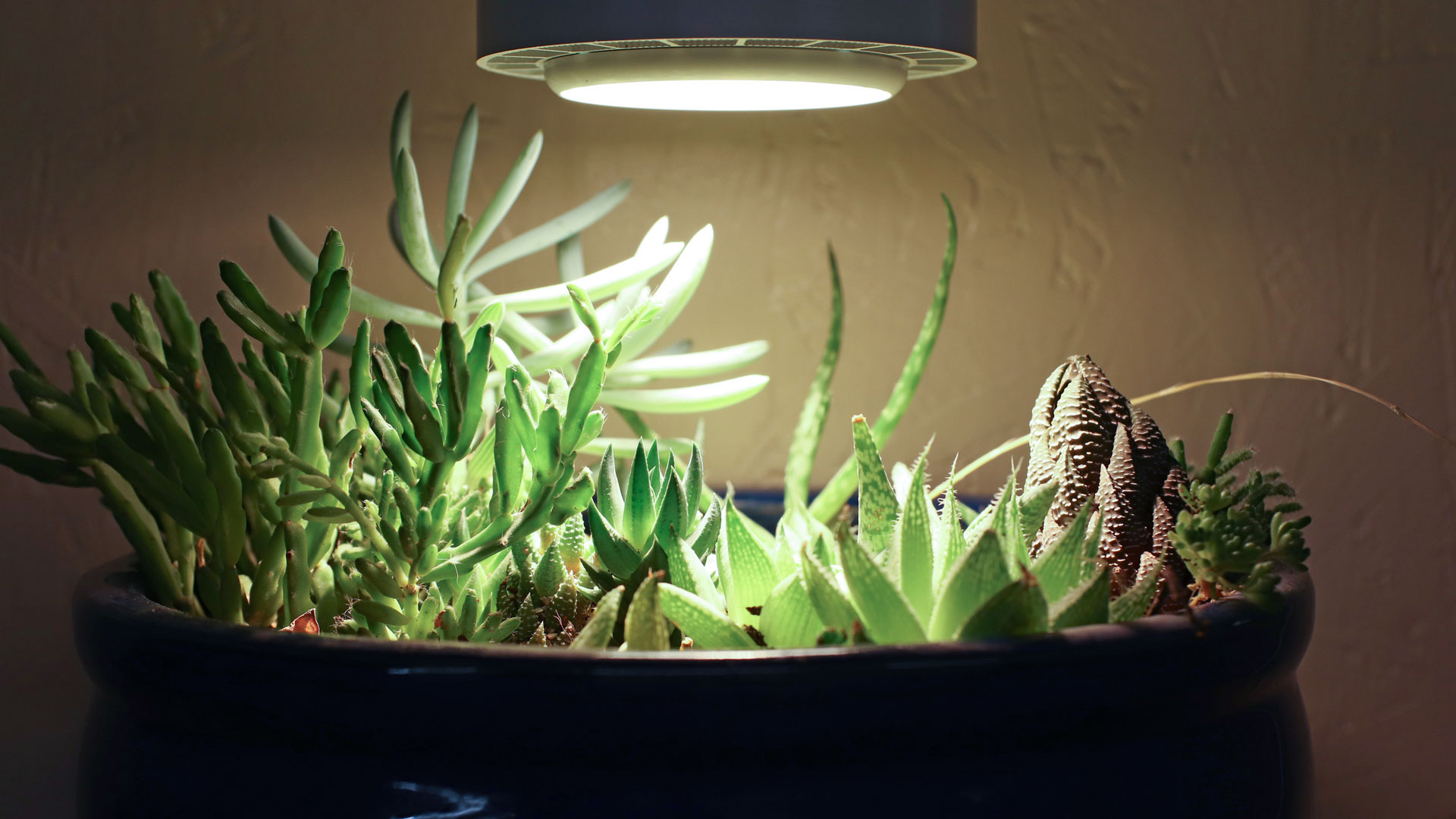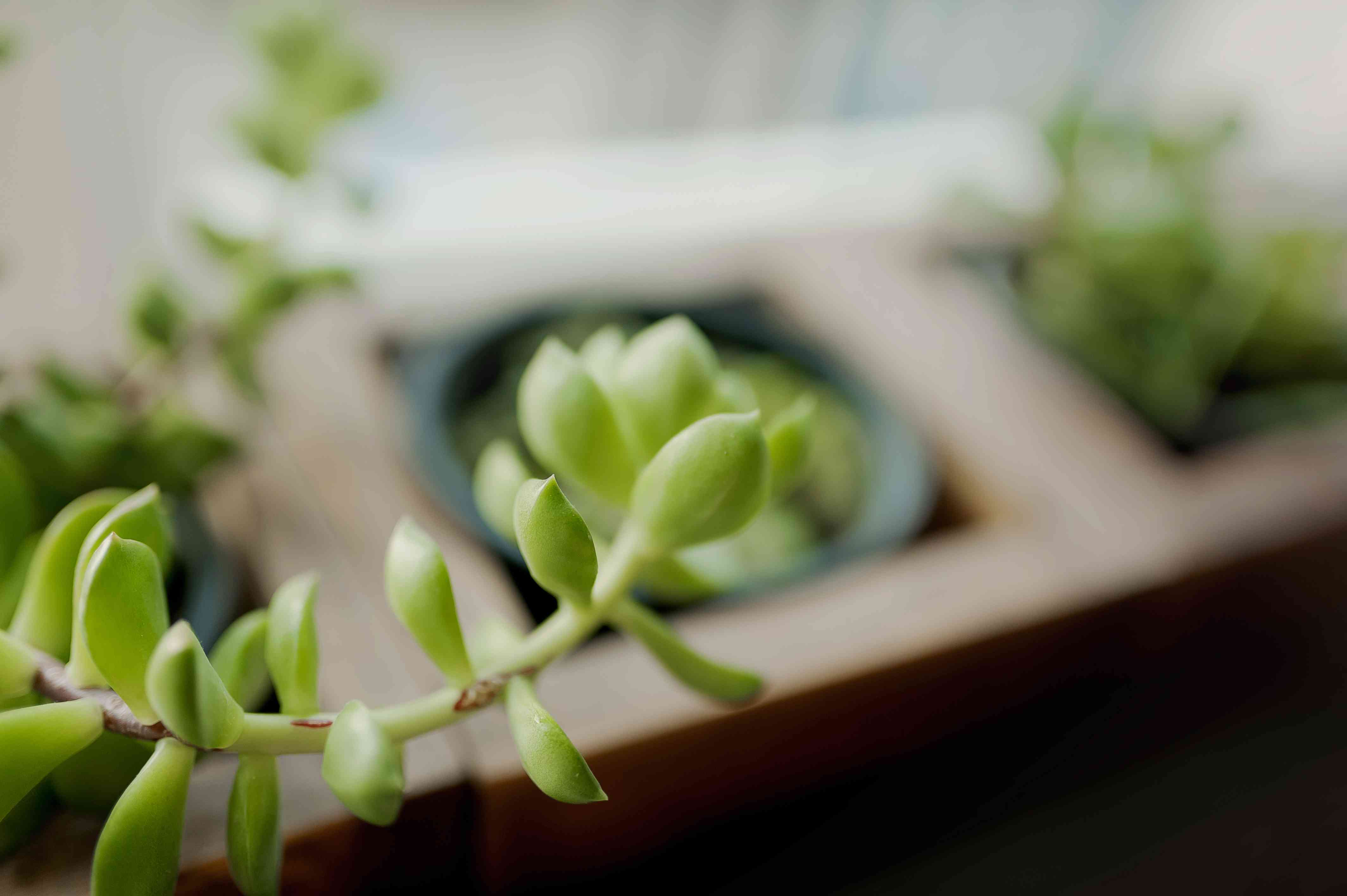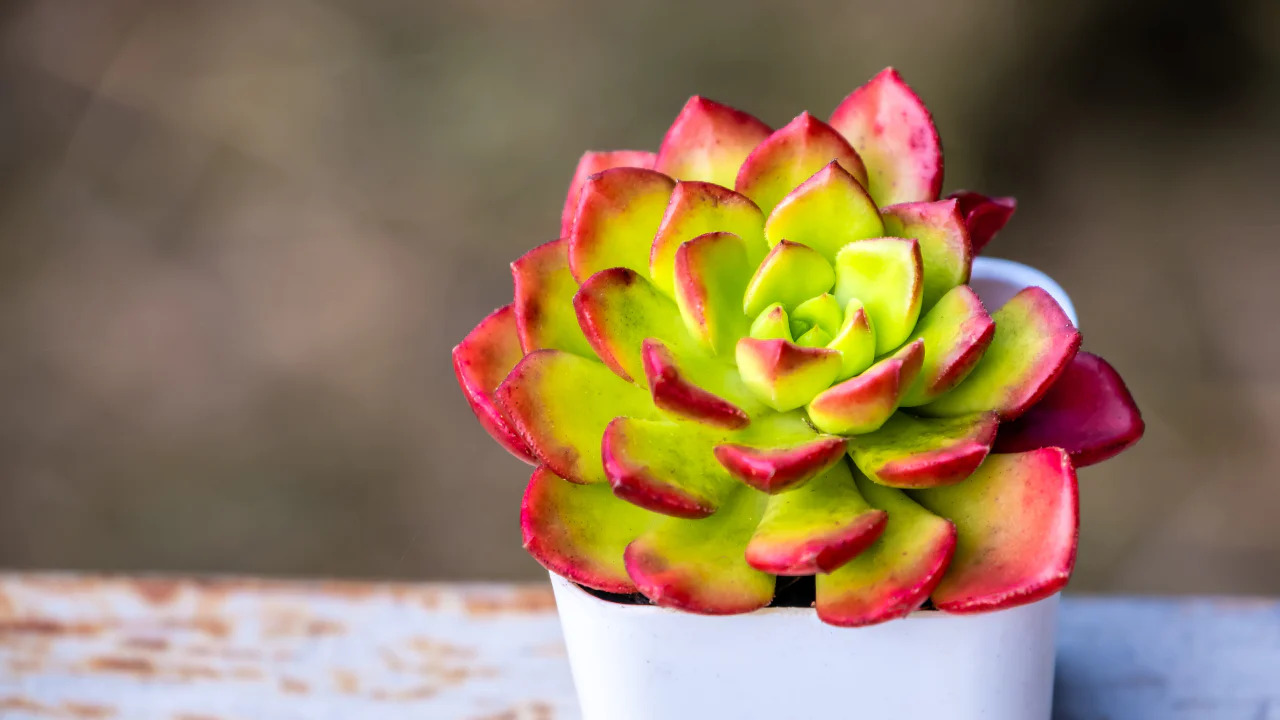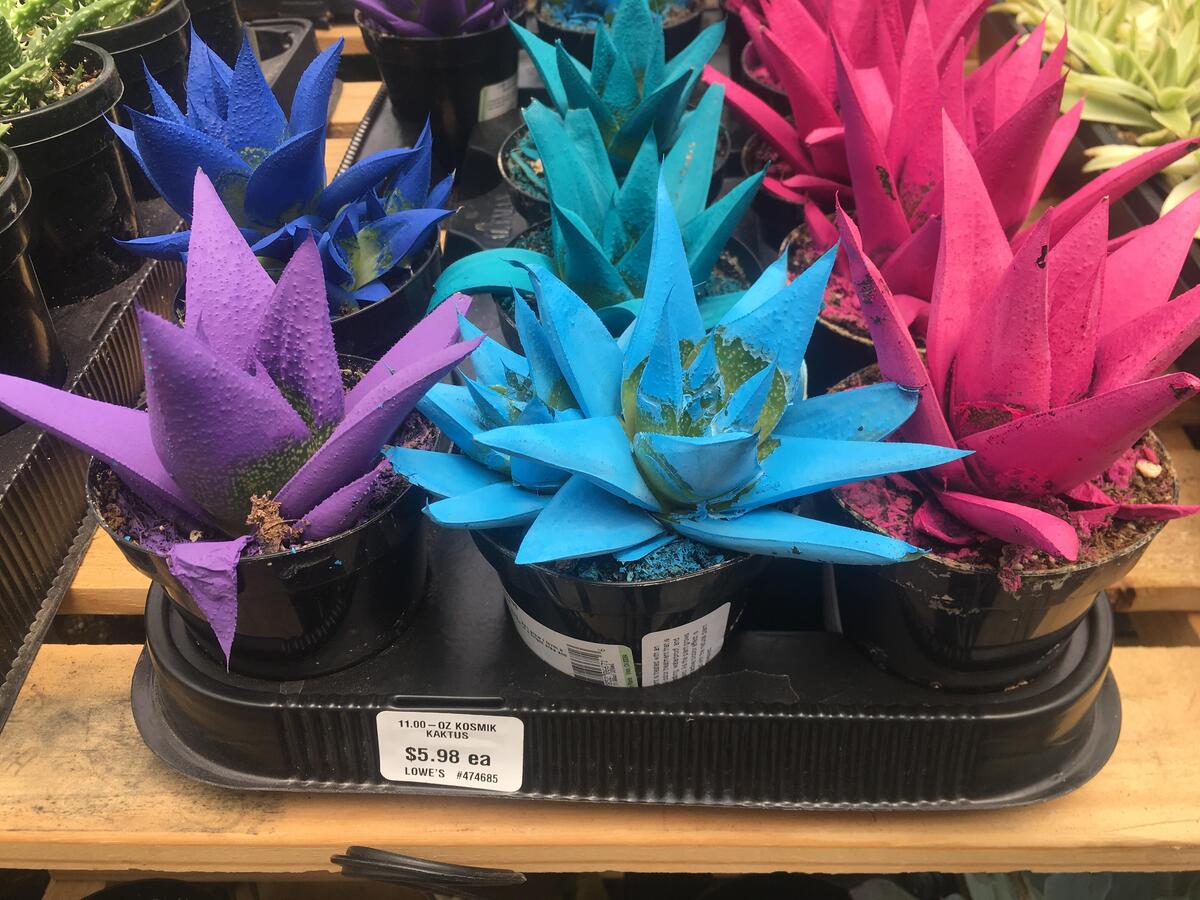Home>Types of Gardening>Ornamental Gardening>How To Grow Succulents
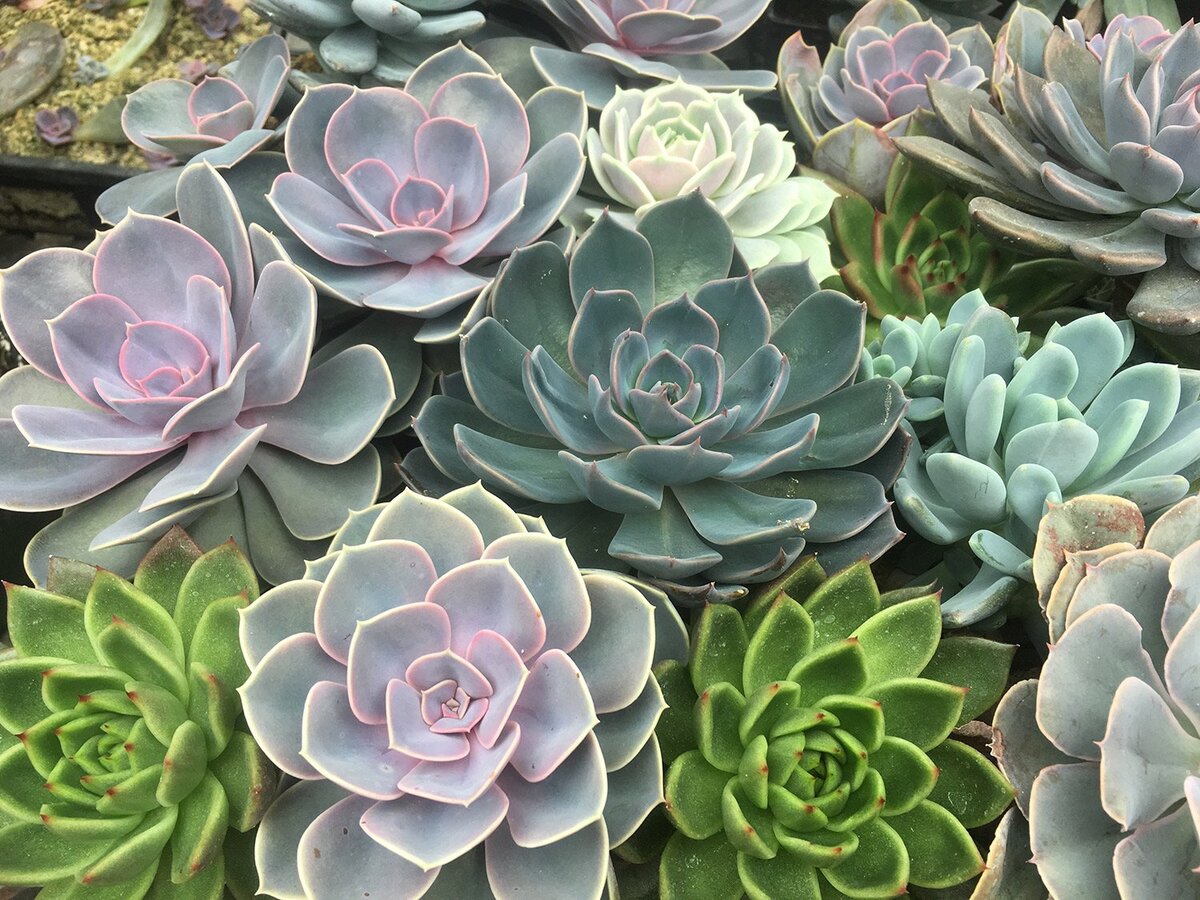

Ornamental Gardening
How To Grow Succulents
Modified: February 2, 2024
Learn the best practices for growing succulents in your ornamental garden. Discover expert tips for cultivating healthy and vibrant succulent plants.
(Many of the links in this article redirect to a specific reviewed product. Your purchase of these products through affiliate links helps to generate commission for Chicagolandgardening.com, at no extra cost. Learn more)
Table of Contents
**
Introduction
**
Succulents have surged in popularity among gardening enthusiasts and interior decorators alike. Their diverse shapes, colors, and low-maintenance nature make them an ideal choice for both seasoned gardeners and beginners. These resilient plants have adapted to survive in arid environments by storing water in their fleshy leaves, stems, and roots. As a result, they require minimal watering and can thrive in various climates, making them a versatile addition to any indoor or outdoor space.
The allure of succulents lies in their striking appearance and the sense of tranquility they bring to any setting. Whether displayed in a terrarium, a hanging planter, or a traditional pot, succulents add a touch of natural elegance to homes, offices, and gardens. Their ability to withstand neglect and thrive in challenging conditions makes them an appealing choice for busy individuals seeking to introduce greenery into their surroundings without the demands of high-maintenance plants.
In this comprehensive guide, we will delve into the art of cultivating succulents, exploring the key factors that contribute to their successful growth. From selecting the right species and understanding their unique needs to providing suitable growing conditions and addressing common challenges, this article will equip you with the knowledge and confidence to nurture vibrant and thriving succulent displays. Whether you are a novice gardener or a seasoned plant enthusiast, the rewarding experience of cultivating these captivating plants awaits you.
Succulents are not only aesthetically pleasing but also offer a sense of tranquility and a connection to nature. By understanding their specific requirements and implementing the appropriate care techniques, you can create stunning arrangements that enhance any environment. Join us as we embark on a journey into the captivating world of succulents, where creativity meets resilience, and the beauty of nature flourishes in the most unexpected places.
**
Choosing the Right Succulents
**
When embarking on your succulent gardening journey, selecting the right species is crucial to ensure a thriving and visually appealing display. With a vast array of shapes, sizes, and colors available, choosing the perfect succulents can be an exciting and rewarding endeavor. Consider the following factors to make informed decisions when adding these captivating plants to your collection:
Diversity of Succulents:
Succulents encompass a wide variety of species, each with its unique characteristics and care requirements. From the iconic rosettes of Echeveria to the architectural allure of Aloe vera, the options are abundant. Explore the diverse shapes, textures, and growth habits of succulents to identify the ones that resonate with your aesthetic preferences and growing conditions.
Indoor versus Outdoor Succulents:
Before making your selection, determine whether you intend to cultivate your succulents indoors or outdoors. Certain species, such as Haworthia and Gasteria, thrive in indoor environments with limited sunlight, while others, like Sedum and Sempervivum, flourish in outdoor gardens with ample sunlight. Understanding the distinct requirements of indoor and outdoor succulents will guide you in choosing suitable varieties for your specific growing space.
Climate Compatibility:
Consider the climate of your region when choosing succulents, as some species are more tolerant of cold temperatures, while others thrive in warm, arid conditions. If you reside in a cooler climate, opt for cold-hardy succulents such as Sempervivum and Sedum, which can withstand frost and thrive in challenging weather conditions. Conversely, if you live in a warmer climate, explore heat-loving succulents like Agave and Aloe, which revel in the sun’s intensity.
Personal Preferences:
Ultimately, your selection of succulents should align with your personal preferences and the overall aesthetic you wish to achieve. Whether you are drawn to the architectural elegance of Euphorbia or the delicate charm of Crassula, allowing your individual taste to guide your choices will result in a collection that resonates with your unique style and vision.
By considering the diversity of succulents, their suitability for indoor or outdoor environments, climate compatibility, and your personal preferences, you can curate a captivating assortment of succulents that will thrive in your care and bring beauty to your surroundings.
**
Selecting the Right Pot and Soil
**
Choosing the appropriate pot and soil is essential for creating an optimal environment for succulents to thrive. The right combination will support healthy growth, provide adequate drainage, and complement the unique characteristics of these resilient plants. Consider the following factors when selecting pots and soil for your succulents:
Pot Selection:
When it comes to pots for succulents, porous containers made of materials such as terracotta or unglazed ceramic are ideal choices. These materials allow for air circulation and moisture evaporation, preventing waterlogged soil and reducing the risk of root rot. Additionally, pots with drainage holes facilitate excess water drainage, further safeguarding succulents against potential water-related issues. Select pots that provide ample space for the plants’ root systems to promote healthy development and stability.
Soil Composition:
Succulents thrive in well-draining soil that prevents water retention and promotes aeration around the roots. Opt for a specialized succulent or cactus mix, or create a custom blend by combining regular potting soil with perlite, coarse sand, or pumice to enhance drainage. This porous soil composition mimics the natural habitat of succulents, ensuring that excess moisture does not compromise their health. Avoid dense or moisture-retentive soils, as they can lead to root rot and other complications.
Pot Size and Depth:
When selecting pots for your succulents, choose containers that provide ample room for root growth while complementing the size of the plants. Avoid excessively large pots, as they can retain excess moisture and lead to overwatering, which is detrimental to succulents. Similarly, shallow pots may not offer sufficient space for robust root development. Strike a balance by selecting pots that accommodate the plants’ root systems comfortably, allowing for future growth without creating an excessively moist environment.
Aesthetic Considerations:
While prioritizing functionality, consider the visual impact of the pots in relation to your overall design aesthetic. Explore a variety of shapes, sizes, and finishes to complement the unique characteristics of different succulent species. Whether you prefer rustic terracotta pots for a classic appeal or modern, minimalist containers for a contemporary look, the aesthetic aspect of pot selection can enhance the overall presentation of your succulent arrangements.
By carefully considering the selection of pots and soil based on their drainage properties, size appropriateness, and visual appeal, you can create an environment that supports the health and vitality of your succulents, while also adding a decorative touch to your living spaces.
**
Watering and Sunlight Requirements
**
Understanding the specific watering and sunlight needs of succulents is paramount to their overall well-being and longevity. These resilient plants have adapted to thrive in arid environments, requiring minimal water and ample sunlight to maintain their vibrant appearance. By adhering to the following guidelines, you can ensure that your succulents receive the essential care they need to flourish:
Watering Frequency:
Succulents are designed to store water in their leaves, stems, and roots, enabling them to withstand periods of drought. As a result, they are susceptible to root rot if overwatered. It is crucial to allow the soil to dry out completely between waterings to prevent moisture-related issues. In most cases, a general rule of thumb is to water succulents thoroughly and then allow the soil to dry out entirely before watering again. The frequency of watering will vary based on factors such as the climate, season, and the specific water retention properties of the soil and pot.
Sunlight Exposure:
Succulents thrive in bright, indirect sunlight, making them well-suited for sunny windowsills, outdoor patios, or garden beds with partial to full sun exposure. When cultivating succulents indoors, position them near south- or west-facing windows to ensure they receive an adequate amount of sunlight. Outdoors, select planting locations that offer ample sunlight while providing protection from intense midday sun, especially in regions with scorching summer temperatures. While succulents are adapted to arid conditions, prolonged exposure to intense, direct sunlight may cause sunburn or heat stress, so it is essential to strike a balance to prevent damage.
Signs of Overwatering and Underwatering:
Monitoring the condition of your succulents is key to identifying potential watering issues. Signs of overwatering include yellowing or translucent leaves, mushy stems, and a foul odor emanating from the soil. Conversely, underwatered succulents may display shriveled or wrinkled leaves, a wilted appearance, and a noticeable decline in overall vigor. By observing these visual cues and adjusting your watering practices accordingly, you can maintain the health and vitality of your succulents.
Seasonal Adjustments:
During the growing season, typically spring and summer, succulents may require more frequent watering as they actively grow and utilize moisture. In contrast, during the dormant period in fall and winter, reduce watering frequency to accommodate the plants’ reduced metabolic activity. Adapting your watering schedule to align with the seasonal needs of succulents will promote optimal health and prevent water-related complications.
By adhering to appropriate watering practices and providing adequate sunlight exposure, you can create an environment that promotes the flourishing of your succulents, allowing their unique beauty to thrive while minimizing the risk of common watering-related challenges.
**
Propagation Techniques
**
Propagating succulents offers a rewarding opportunity to expand your collection and share these captivating plants with others. Whether you are seeking to multiply your existing succulents or create thoughtful gifts for fellow enthusiasts, mastering propagation techniques is a valuable skill that allows you to witness the growth and development of new plants. Explore the following methods to propagate succulents successfully:
Leaf Propagation:
One of the most common and fascinating methods of propagating succulents is through leaf propagation. This process involves carefully removing individual leaves from a healthy parent plant and allowing them to callus before placing them on well-draining soil. Over time, tiny roots will emerge from the base of the leaves, eventually leading to the formation of new plantlets. Leaf propagation is particularly effective for genera such as Echeveria, Sedum, and Graptopetalum, offering a glimpse into the remarkable ability of succulents to regenerate from individual leaf cuttings.
Stem Propagation:
Stem propagation involves taking cuttings from the stems of mature succulents and allowing them to dry before planting them in suitable soil. This method is well-suited for succulent species with robust, fleshy stems, such as Crassula and Senecio. Once planted, the cuttings will develop roots and establish themselves as independent plants, showcasing the resilience and adaptability of succulents in their propagation process.
Offset Division:
Many succulents produce offsets, also known as pups or offshoots, which are miniature versions of the parent plant that emerge from the base or sides. These offsets can be carefully detached from the parent plant and potted individually, allowing them to grow into mature succulents over time. This method is commonly observed in species such as Sempervivum and Agave, providing a natural means of reproduction and expansion within the succulent community.
Seed Propagation:
While less commonly utilized than vegetative propagation methods, growing succulents from seeds offers a captivating and educational experience. Collecting and sowing seeds from mature succulents allows for the cultivation of diverse and potentially unique plant varieties. Seed propagation requires patience and attention to detail, as it involves providing the optimal conditions for germination and nurturing the seedlings as they develop into resilient succulents.
By exploring the diverse propagation techniques available for succulents, you can expand your collection, share the beauty of these plants with others, and gain a deeper understanding of their remarkable ability to regenerate and thrive. Each method offers a unique perspective on the resilience and adaptability of succulents, enriching your gardening experience and fostering a deeper connection with these captivating plants.
**
Common Pests and Diseases
**
While succulents are renowned for their resilience, they are not immune to the threat of pests and diseases. Understanding the common issues that can affect these plants is essential for preserving their health and vitality. By familiarizing yourself with the following potential challenges, you can proactively safeguard your succulents and intervene promptly if issues arise:
Mealybugs:
Mealybugs are among the most prevalent pests that can afflict succulents, often congregating in the crevices of leaves and stems. These small, cotton-like insects feed on plant sap, causing stunted growth and weakening the overall health of the succulents. To combat mealybugs, gently wipe the affected areas with a cotton swab dipped in rubbing alcohol, and consider introducing natural predators such as ladybugs to control infestations.
Scale Insects:
Scale insects are another common threat to succulents, appearing as small, waxy bumps on the leaves and stems. These pests feed on plant fluids, leading to yellowing, wilting, and leaf drop. To address scale infestations, gently scrub the affected areas with a soft brush and soapy water, followed by rinsing the plants thoroughly. Additionally, introducing predatory insects or applying horticultural oils can help manage scale populations.
Root Rot:
Excessive moisture and poor drainage can predispose succulents to root rot, a fungal disease that compromises the roots’ ability to absorb nutrients and water. Symptoms of root rot include wilting, discoloration, and mushy roots. To prevent and address root rot, ensure that the succulents are planted in well-draining soil and pots with drainage holes. If root rot is detected, gently remove the affected areas, allow the roots to dry, and repot the plants in fresh, dry soil.
Powdery Mildew:
Powdery mildew, characterized by a white, powdery coating on the leaves, can occur when succulents are exposed to high humidity and inadequate air circulation. This fungal disease can hinder photosynthesis and weaken the plants over time. To mitigate powdery mildew, improve air circulation around the succulents, avoid overhead watering, and apply fungicidal treatments if necessary.
Preventive Measures:
To minimize the risk of pest infestations and diseases, maintain a clean growing environment, inspect your succulents regularly for signs of trouble, and isolate any affected plants to prevent the spread of issues. Additionally, avoiding overwatering, providing adequate air circulation, and implementing natural pest control methods can contribute to the overall health and resilience of your succulents.
By remaining vigilant and proactive in addressing potential pest and disease challenges, you can nurture thriving succulents and create an environment that promotes their natural resilience and beauty.
**
Tips for Growing Succulents Successfully
**
Cultivating vibrant and resilient succulents requires a thoughtful approach and a keen understanding of their unique needs. By incorporating the following tips into your succulent care routine, you can create an environment that fosters their health, longevity, and visual appeal:
Optimal Drainage:
Ensure that your succulents are planted in pots with drainage holes and well-draining soil to prevent waterlogged conditions that can lead to root rot. Selecting porous containers and incorporating materials such as perlite or coarse sand into the soil mix promotes effective drainage, safeguarding the plants’ health.
Appropriate Watering:
Adopt a watering schedule that allows the soil to dry out completely between waterings, adjusting the frequency based on environmental factors and seasonal variations. Water the succulents thoroughly and allow any excess water to drain away, preventing moisture-related issues while supporting the plants’ water storage capabilities.
Sunlight Balance:
Position your succulents in locations that receive bright, indirect sunlight, especially for species that thrive indoors. Outdoors, provide partial to full sun exposure while offering protection from intense midday rays. Monitoring the plants for signs of sunburn or etiolation and adjusting their placement accordingly ensures that they receive the optimal amount of sunlight for healthy growth.
Temperature Considerations:
Be mindful of temperature fluctuations and seasonal changes, particularly in regions with extreme climates. Protect succulents from frost and freezing temperatures, and provide adequate ventilation to prevent heat stress during hot weather. Understanding the temperature preferences of your succulents will help maintain their resilience and vigor.
Minimal Fertilization:
Limit the use of fertilizers for succulents, as excessive nutrients can disrupt their natural balance and lead to issues such as leggy growth. Apply a diluted, balanced fertilizer sparingly during the growing season, and refrain from fertilizing during the dormant period to support the plants’ natural rhythms.
Observation and Maintenance:
Regularly inspect your succulents for signs of pests, diseases, or environmental stress, addressing any issues promptly to prevent complications. Prune and remove dead or damaged foliage to promote air circulation and maintain the plants’ aesthetic appeal.
Experiment with Varieties:
Explore the diverse range of succulent species and cultivars, experimenting with different shapes, colors, and growth habits to create visually captivating displays. Embrace the opportunity to propagate new plants and share the beauty of succulents with fellow enthusiasts, fostering a sense of community and appreciation for these remarkable plants.
By implementing these tips and tailoring your care approach to the specific needs of your succulents, you can cultivate thriving and visually stunning displays that showcase the resilience and natural allure of these captivating plants.
**
Conclusion
**
Embarking on the journey of growing succulents is a rewarding and enriching endeavor that invites you to explore the resilience, diversity, and natural beauty of these remarkable plants. By immersing yourself in the art of succulent cultivation and integrating the insights and techniques shared in this guide, you are poised to create thriving and visually captivating displays that enrich your living spaces and connect you with the wonders of the natural world.
Throughout this comprehensive exploration, we have delved into the essential aspects of succulent care, from selecting the right species and understanding their unique needs to providing suitable growing conditions and addressing potential challenges. By embracing the principles of optimal drainage, appropriate watering, balanced sunlight exposure, temperature considerations, minimal fertilization, and attentive observation, you can establish an environment that nurtures the health and vitality of your succulents.
Moreover, the propagation techniques discussed offer an opportunity to expand your succulent collection, share the beauty of these plants with others, and gain a deeper appreciation for their remarkable ability to regenerate and thrive. From leaf and stem propagation to seed cultivation, each method provides a window into the resilience and adaptability of succulents, enriching your gardening experience and fostering a deeper connection with these captivating plants.
As you apply the insights and tips shared in this guide, remember that the journey of growing succulents is a dynamic and evolving process that invites you to observe, learn, and cultivate a deeper understanding of these extraordinary plants. By embracing the art of succulent care with patience, creativity, and attentiveness, you can create stunning arrangements that infuse your surroundings with tranquility, natural elegance, and a touch of botanical enchantment.
May your succulent journey be filled with joy, discovery, and the flourishing beauty of these resilient plants, inspiring a deeper appreciation for the wonders of nature and the artistry of gardening.

